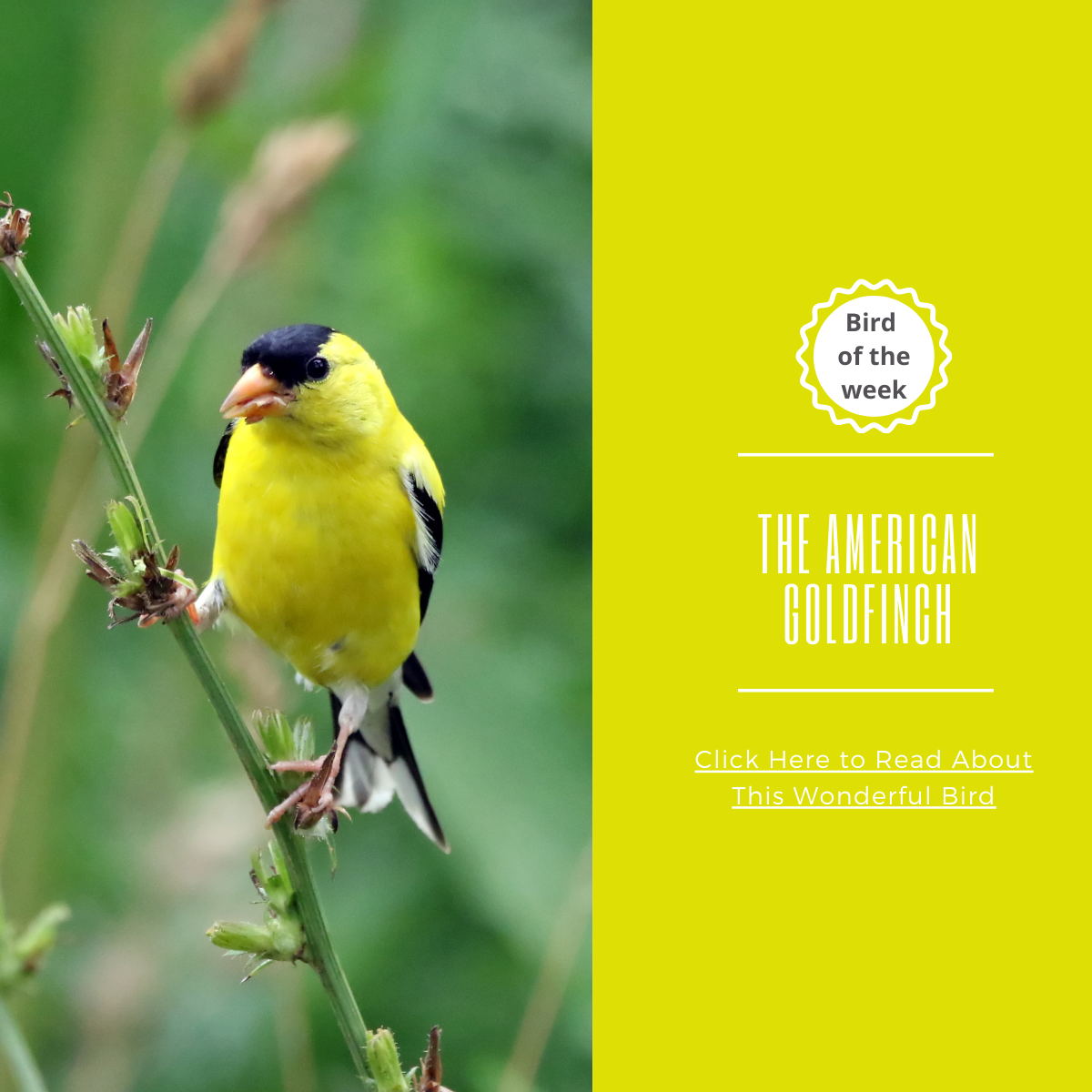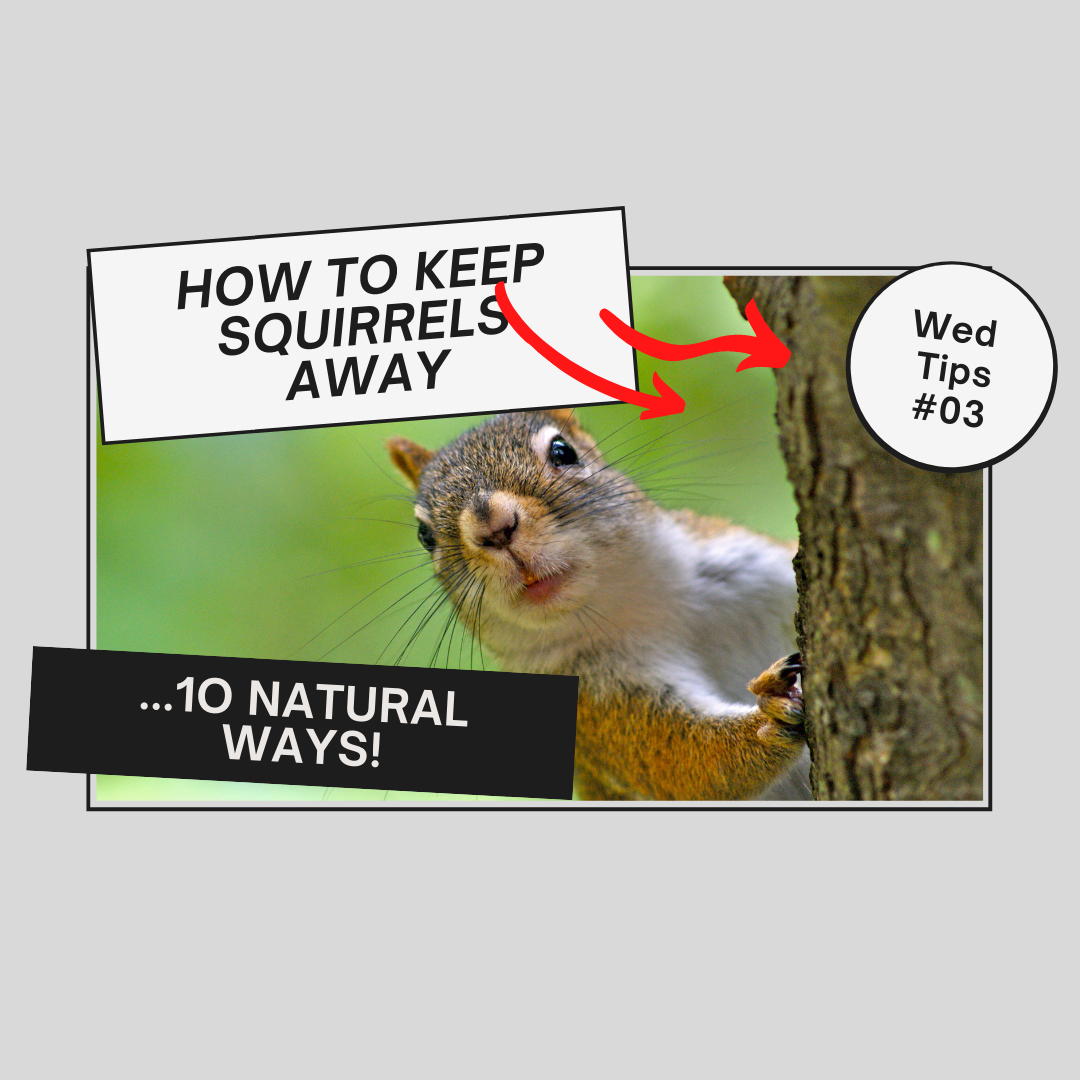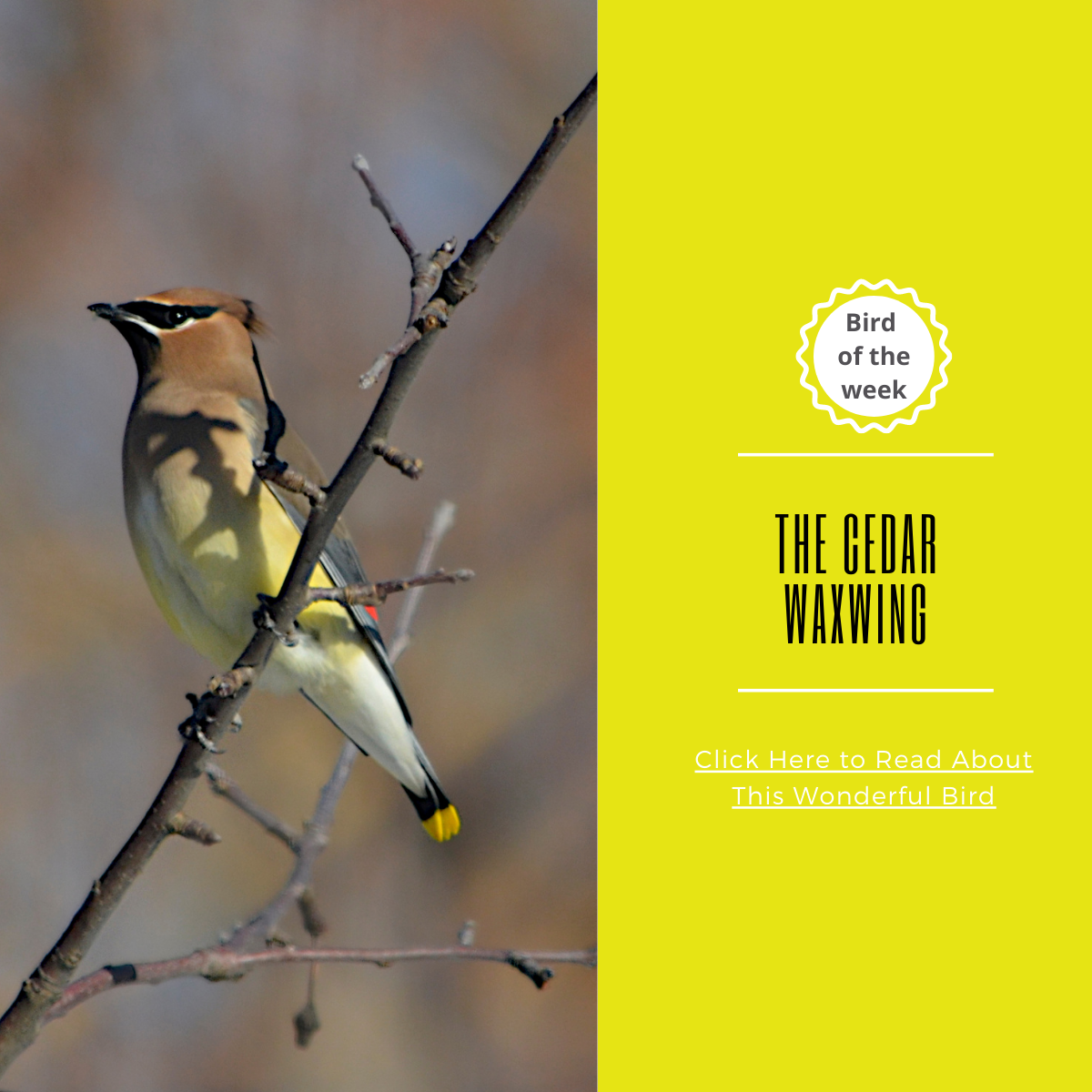
This cute yellow bundle of bustling energy is a sign that the ice of winter will be melting soon. It always warms the cockles of the heart to see the finch getting his yellow feathers at the end of winter as this means sunny days are ahead, and spring is near.
Goldfinches feel quite at home and happy in backyards all over the United States and Southern Canada. Friendly and sociable with other songbirds, Goldfinches flock together with Pine Siskins and common Redpolls. They roam in backyards, plains and forests - anywhere there are brushes and thistle plants.
The survival ratio of males and females is 3 males to 2 females, possibly because male goldfinches live longer than females.The longest lifespan of an American Goldfinch was recorded as 10 years 9 months, before it was banded and released again in Maryland.
In case you missed last week's bird of the week: The Purple Martin
LOOKS

American goldfinches are about 4-5 inches long and weigh not even half an ounce - about 2 spoons of sugar!
These are the only finches which molt their body feathers twice a year in the changing seasons. The males start winter with a warm brown color and hints of yellow around the face, and their wings are black drawn with white lines. Come summer, they burst out in yellow all over. Their cute beaks are cone-shaped and on their heads they display a black patch like a toupee.
The females are greenish yellow with black wings and a tail which turns grayish-brown come summer with less yellow. The black wings turn into a warm-brown with the same white stripes. During the winter, males and females look alike.
Juveniles look like females but the colors seem more washed out.They sport tan coloured stripes on their black wings.
WHAT DO GOLDFINCHES EAT?
Goldfinches are 100% seed-eaters and enjoy mainly sunflower and nyjer seeds. With time, they have adapted to live on seeds alone.
The only time they eat insects is if they accidentally open their beak and an insect flies in! Goldfinches build their nests and feed on aster, milkwood, elm and thistles, as well as other composite plants. Planting them in your garden is a great way to attract them, especially in the spring when they burst into full yellow.

It’s fun to see them acrobatically dangling from the delicate stem of a dandelion or dipping upside down as they peck on seeds like coneflowers and sunflowers.
Other sources of nutrition come from grasses and trees such as alder, birch and western red cedar.
The yellow color comes from dietary pigments which the birds get from the seeds they eat.
WHAT BIRD FEEDERS DO FINCHES PREFER?
Goldfinches are not fussy. In fact they love bird feeders, especially in the East of the US. They’ll take any kind of feeder: hanging, tilting, hoppers, feeders that sway in the wind, or are stuck on a pole, eating upside down - what have you. They will go for platforms, trays, even ground feeders, or just eat the seeds that fall from the feeder to the ground. You just need to decide which bird feeder you prefer. Need help choosing? Click here.
Goldfinches will eat from your bird feeder all year long - but the way to their hearts is with nyjer seeds in the first place and hulled sunflower seeds in the second. The most popular on the menu is nyjer seeds which need their own special kind of feeder as these seeds are so tiny.
Look closely at your bird feeders. You will notice that the females are dominant over males in the summer but come winter, there will be a switcheroo and the females turn to be subservient to the males.
HOW DO THEY SOUND
These yellow songbirds have 6 different vocalizations, but are most known for sounding as if they are saying “po-ta-to-chip”. This vocalization is used to communicate within the flock. The juveniles actually have baby talk - a very squeaky version of the adults.
FINCH COURTSHIP AND NESTING
In winter the Goldfinch starts to molt and now they look bizarrely patchy. Up until then, they live quietly in their roost.
Then the yellow feathers make their appearance - and the mating begins.
The mating is done as many finches vy for the female, flying in large groups covering quite a large amount of real estate. They fly far and wide - but in less than half an hour, the couples are matched. The male will flutter his wings with the butterfly dance - slowly showing his wings, or perform the moth dance, quick flutters of his wings to show the female his mettle.
 Once the goldfinches have found their mates, they create identical flight calls. Pairs identify other pairs by their unique unified calls.
Once the goldfinches have found their mates, they create identical flight calls. Pairs identify other pairs by their unique unified calls.
American Goldfinches are not early breeders - in fact they are one of the latest to breed out of all North American birds. They usually wait to nest until June or even August - as that is when milkweed, thistle, and other plants with fibre-rich seeds are in full blossom and the goldfinches can use their flower parts for their nests and also feed/regurgitate the seeds for their young.
These nests can be found in your backyard or similar territory such as farms. The nest is cup shaped, built 4-20 feet up in the air, usually composed of weeds, vines, spider or caterpillar webbing and twigs - these nests are so tight you can pour a cup of coffee in it and it will not spill through!

Building a nest on a branch where 3 or more branches meet helps the goldfish to create the cup shape. Weirdly, upon completion, the happy couple fly away, leaving the nest looking abandoned when in fact just a few weeks later, the female will return and lay her eggs.
The female lays 2-7 eggs which are either baby-blue colored or sometimes white with brown spots on them. She will incubate them for about two weeks and during this time, the male will feed her.
After a few weeks the eggs will hatch. Two weeks after that, the little ones will be able to fly already, but will still stick around for another month in the comfort of their cozy nest.
When the hatchlings are just a few weeks old, the female will leave the nest, leaving the male to feed the nestlings as they grow older. She flies away to choose the location for another nest, builds it on her own, lays her eggs from the male, and again, incubates the eggs on her own. During this time the male, again, will feed the female.
How cute are these juvenile American goldfinches?

FUN FACTS:
Female finches work hard
The female finch, who builds the nest on her own, will build yet another nest for the second (and last) brood while the male feeds the first brood.
Why is the Goldfinch gold?
During the breeding season, the male dazzles the female with his beautiful feathers. It appears that the brighter the color, the healthier and stronger the male. He can get better nesting areas, has more breeding success and is most helpful with the fledgelings. The showier the better!
Brrrrrrr
In the cold season, American goldfinches burrow under the snow to form a cozy sleeping space or roost together in coniferous trees. But if the temperature dips below zero, they will fly south. According to studies of goldfinches which had been banded, some American Goldfinches from Ontario migrated more than 1,000 miles to Louisiana.
Yellow and peaceful
American goldfinches do not join other song birds to scare off predators. Even if other goldfinches trespass on their feeding grounds, they won’t lift a wing.
Trespassing
Cowbirds are known to lay their eggs in goldfinch nests, but when their eggs hatch, the cowbird babies don’t have much of a chance to survive as the goldfinch only brings seeds to the fledglings - and the cowbirds need insect protein to survive. They could die in 3 to 4 days.
Sooo lovely to watch:




2 comments
Lynne
I am enjoying many goldfinches at my feeders! I notice the males will come to feed , and the females always seem to come separately to feed, unlike cardinals, sparrows and house finches that will often feed as a couple. Any insight on this?
Carl Pfeifer
i enjoy birds good thing about birds is i like watching them come to feeder when i get up in mornings i love seeing cardinal birds come to feed on feeder it feels good to see cardinal birds when i see cardinal bird it brings good luck.when someone passes on cardinal bird will visit everything will be ok
Leave a comment
All comments are moderated before being published.
This site is protected by hCaptcha and the hCaptcha Privacy Policy and Terms of Service apply.